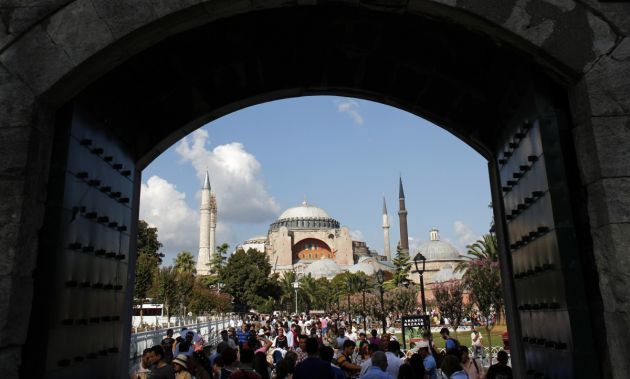A second iconic church is transformed into a mosque in Istanbul

First it was Hagia Sophia, then Turkish President Recep Tayyip Erdogan confirmed the conversion of Istanbul's Byzantine Church of St. Savior in Chora into a mosque.
He had ordered the Chora transformation in August 2020, and the announcement of the conversion came a month after reopening the former Hagia Sophia basilica for Muslim worship, La Croix International reported on May 14.
Both sites are listed as United Nations' World Heritage Sites, and both mosque conversion drew praise from the Muslim community, MSN.com reported.
When Erdogan announced his decision to turn the Hagia Sophia museum back into a mosque, Pope Francis ha, however, shown he was not pleased.
POPE FRANCIS SADDENED
"I think of Hagia Sophia", said the Pope, "and I am very saddened."
Just like Hagia Sophia was a church for centuries, and Chora had operated as a museum for decades. Chora was launched as a mosque in 2020 but had to undergo some changes to make it an operational one.
On May 6, Erdogan attended the ceremony of the opening of Chora as a mosque.
The Chora Church dates back to the 11th to 12th century but was transformed into a museum in 1945.
On November 29, 2014, during his apostolic trip to Turkey, Pope Francis visited the Hagia Sophia Basilica in Istanbul, La Civilta Cattolica reported back on October 1, 2020.
Hagia Sophia – in Turkish Aya Sofya – is an ancient monument that dominates the entire city, the Bosphorus and the Golden Horn.
The basilica, a culmination of technical expertise and architectural wonder, has been described as "a work of divine inspiration," the "place between earth and sky," the "eighth wonder of the world," and the "symbol of imperial power."
Hagia Sophia was commissioned and was built in 537 by the Eastern Roman Emperor Justinian and his wife, Theodora, and then, after a fire, it was rebuilt in 562.
It was the largest basilica in Christendom and the world – the Megale Ekklesia – the most important church in Constantinople, where the Byzantine emperors were crowned.
The city, founded by Constantine as the New Rome, also established itself as the religious capital of Christianity, according to La Civilta Cattolica.
Today, Greeks still call it Constantinople.
It has had several names over time, including the ancient name of Byzantium.
The current name, Istanbul, comes from the Greek, from the common expression eis tēn polin, and means ad Urbem, that is "[go] to Rome," as in the New Rome.